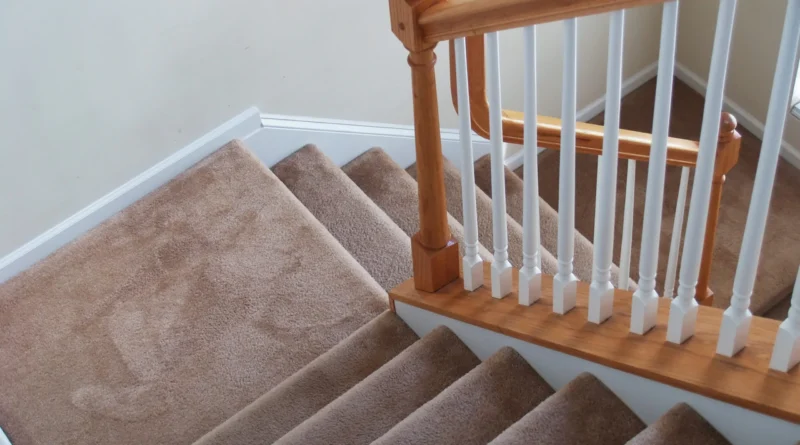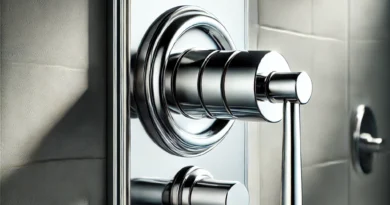How to Measure Carpet for Landing and Stairs: The Complete Guide
Understanding the Importance of Accurate Carpet Measurement
Measuring carpet for landing and stairs is a crucial step in home improvement projects. Whether you’re replacing old carpeting or installing new material for the first time, precise measurements ensure that you purchase the right amount of carpet, minimizing waste and reducing unnecessary costs. If done incorrectly, you could end up with shortages that leave exposed areas or excess material that goes to waste. Additionally, measuring accurately helps with ensuring a snug fit, enhancing the durability and aesthetics of the installation.
The process of measuring carpet for stairs and landings is more complex than measuring for a standard rectangular room. This is due to the varying stair shapes, different stair dimensions, and the way carpet needs to be wrapped around each stair tread and riser. There are also additional elements to consider, such as nosing (the edge of the stair), overhangs, and the need for extra material to accommodate movement and securing the carpet correctly. By understanding the proper way to measure each section, you can achieve a professional-looking finish.
Essential Tools for Measuring Carpet for Landing and Stairs
Before you begin the measurement process, it’s important to gather the necessary tools. The right equipment will help you measure accurately and ensure the calculations are precise. Some essential tools include:
- Tape Measure: A retractable, flexible tape measure will help you get accurate dimensions for stairs and landing spaces.
- Calculator: To add up the dimensions correctly and ensure you purchase the right amount of carpet.
- Notepad and Pencil: Keeping a record of measurements is crucial to avoid errors and ensure all numbers are accounted for.
- Graph Paper: Sketching out the stair layout and marking measurements can help visualize the coverage needed.
- Ruler or Straight Edge: This helps with making precise markings when sketching stair diagrams.
These basic tools will help simplify the measurement process and reduce the likelihood of making errors that could lead to purchasing the wrong carpet size.
Measuring Carpet for Straight Stairs
Straight stairs are the most common type of staircase and the easiest to measure. When measuring for carpet, you need to take into account the tread (horizontal step) and riser (vertical part of the step). Follow these steps to get an accurate measurement:
- Measure the Tread: The tread is the part of the step where you place your foot. Use the tape measure to find the depth of the tread from the front edge (nosing) to the back where it meets the riser.
- Measure the Riser: The riser is the vertical section between two treads. Measure from the bottom of one tread to the top of the next.
- Include the Nosing: If the stairs have a rounded or protruding nosing, be sure to add its measurement to the total length.
- Calculate the Total Carpet Needed: Multiply the sum of the tread and riser measurement by the number of steps to determine the total length of carpet required.
For example, if the tread is 10 inches and the riser is 8 inches, the total height per step is 18 inches. If you have 12 steps, the total carpet needed will be:
18 inches × 12 steps = 216 inches (or 18 feet).
Measuring Carpet for Landings
Stair landings are the flat areas between staircases, at the top, or at the bottom. Measuring for a landing requires a slightly different approach:
- Measure the Width and Length: Use your tape measure to get the exact dimensions of the landing, noting both the width and length.
- Check for Overhangs: If the landing extends beyond the edge of the stairs or has an overhang, account for the extra space.
- Consider Carpet Seams: If the landing requires a separate carpet piece, you may need to include additional measurements for proper alignment.
A landing measurement is straightforward, but accuracy is crucial to ensure the carpet fits properly and aligns with the stair carpeting.
Measuring Carpet for Winder Stairs
Winder stairs are more challenging to measure because they are angled or curved. The steps vary in width, requiring careful calculations. Here’s how to measure:
- Measure the Widest and Narrowest Points: Since winder stairs are uneven, take multiple width measurements at different points.
- Measure the Tread and Riser as Usual: Calculate the total length required for each step, adding up the treads and risers.
- Consider Extra Material for Overlapping: Winder stairs require additional carpet to cover the transitions between each step smoothly.
By carefully measuring the widest part of each step, you ensure the carpet covers the entire surface without gaps.
How to Calculate Total Carpet Needed for Stairs and Landing
Once you have all individual measurements, the next step is to calculate the total carpet required:
- Add Up the Stair Measurements: Multiply the total stair height by the number of steps.
- Include the Landing Measurement: Add the landing dimensions to the stair calculation.
- Factor in Extra Material: Always add about 5-10% extra carpet to accommodate errors, pattern matching, and trimming needs.
For example, if the total stair length is 18 feet and the landing requires 4 feet of carpet, you should purchase approximately 23-24 feet of carpet to ensure proper coverage.
Why Accurate Carpet Measurement is Essential
Accurate carpet measurement ensures:
- Proper Fit: Avoids gaps and overlapping issues.
- Cost Efficiency: Prevents unnecessary waste and overspending.
- Aesthetic Appeal: Ensures a professional, well-fitted carpet installation.
- Durability: Allows for proper securing and longer carpet lifespan.
Taking time to measure carefully will result in a better-finished look and reduce the likelihood of needing adjustments or additional carpet purchases later.
Conclusion
Measuring carpet for landing and stairs requires attention to detail and proper calculation. By following the steps outlined above, you can accurately determine the right amount of carpet needed, ensuring a seamless fit. Whether your stairs are straight, have a landing, or include winder steps, precise measurements are key to achieving a professional-looking installation. Investing time in careful measurements saves money, minimizes waste, and enhances the overall aesthetic and durability of your carpeted stairs.




